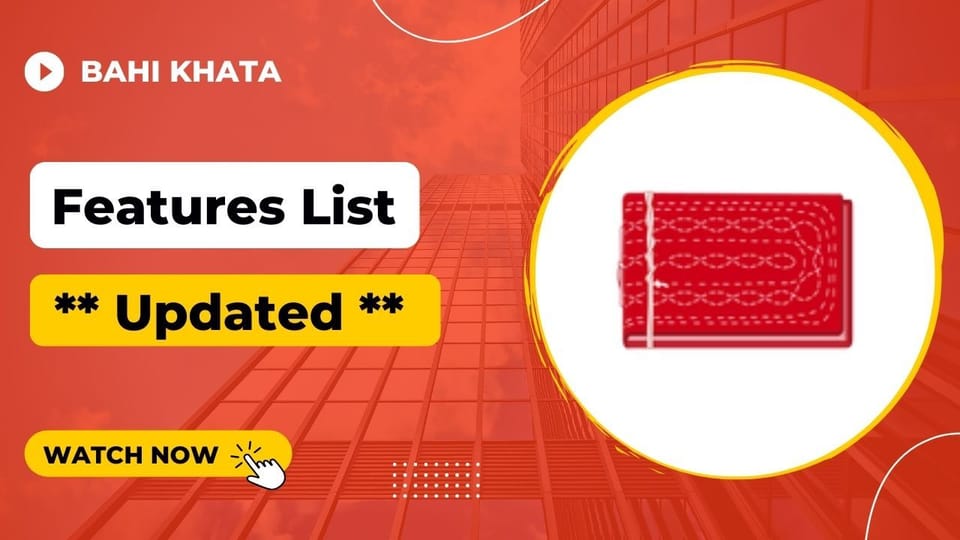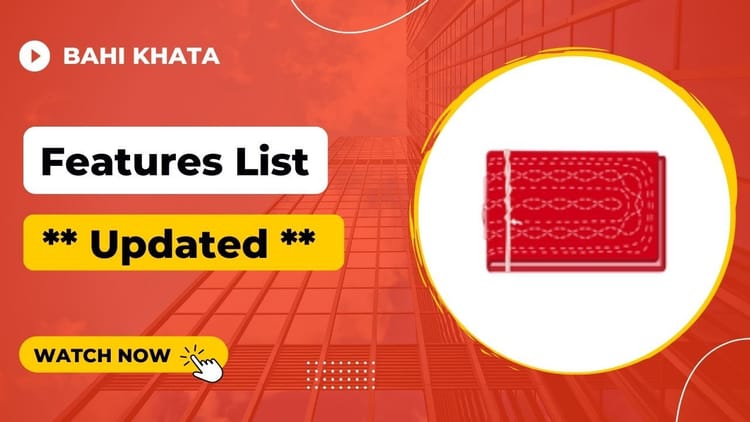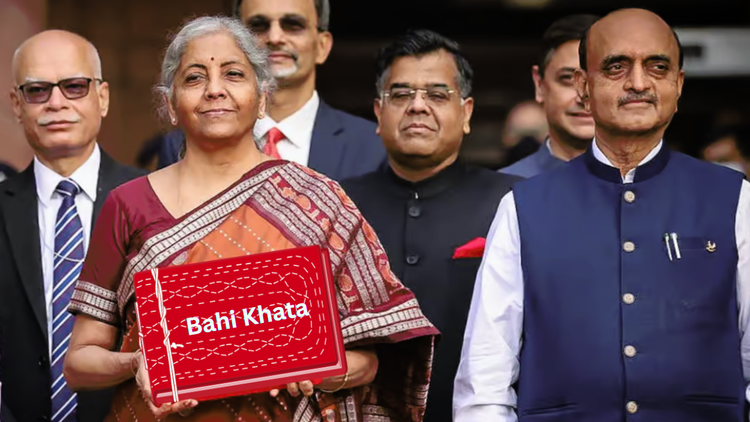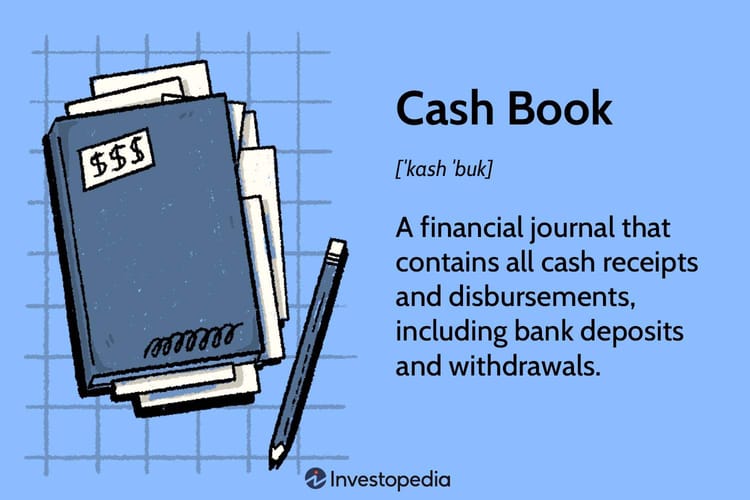Understanding Bahi Khata: A Simple Guide to its Features

History of Bahi Khata:
- The history of Bahi Khata is deeply rooted in traditional Indian accounting practices. Dating back centuries, before the advent of modern accounting systems, businesses and individuals in India relied on handwritten ledgers to record financial transactions. The term "Bahi Khata" itself is derived from Hindi, where "Bahi" means book, and "Khata" means account.
- Bahi Khata has been an integral part of the Indian business culture, especially in small enterprises and local markets. In ancient times, merchants, traders, and shopkeepers used Bahi Khata to meticulously document their transactions, ensuring a systematic and tangible record of financial activities.
- This manual accounting method continued through various historical periods, adapting to changing economic landscapes. With the influence of colonialism and the introduction of modern banking and accounting practices, some businesses transitioned to more advanced systems. However, Bahi Khata endured, retaining its significance in many local and traditional setups.
- In recent years, as India experienced a digital revolution, there has been a resurgence of interest in preserving cultural practices. Bahi Khata, with its handwritten charm and cultural connections, has found a renewed appreciation, even in digital advancements.
- While the specific timeline of Bahi Khata's history may not be precisely documented, its enduring presence reflects the resilience of traditional accounting methods and their ability to coexist with contemporary financial practices. Today, Bahi Khata stands not only as a ledger but as a cultural artifact, bridging the rich heritage of Indian commerce with the demands of the modern financial world.
What is Bahi Khata?
- Bahi Khata, also known as Bahi-Khate, is a traditional accounting ledger used in India. It is a handwritten ledger where businesses, shopkeepers, and individuals record their financial transactions. The term "Bahi" refers to a book, and "Khata" means account. So, Bahi Khata essentially translates to a book of accounts.
Features of Bahi Khata
- Handwritten Records: One of the distinctive features of Bahi Khata is that it is handwritten. Unlike modern digital accounting systems, Bahi Khata relies on the age-old practice of pen and paper. This adds a personal touch and a sense of tradition to the process.
- Simple and Easy to Use: Bahi Khata is designed to be simple and easy to use, making it accessible to people from various walks of life. It doesn't require advanced knowledge of accounting software, making it an ideal choice for small businesses and local shop owners.
- Daily Transaction Recording: Users of Bahi Khata record their daily transactions in the ledger. This includes details of sales, purchases, expenses, and any other financial activities. The ledger helps in maintaining a chronological record of all financial events.
- Financial Clarity: By regularly updating the Bahi Khata, individuals and businesses can gain a clear understanding of their financial standing. It acts as a manual tool for tracking income, expenses, and profits, facilitating better financial management.
- Personalized Entries: Bahi Khata allows for personalized entries, enabling users to include specific details about each transaction. This customization can be particularly helpful in identifying the nature of transactions and tracking individual customer accounts.
- Trust and Transparency: The handwritten nature of Bahi Khata adds a layer of trust and transparency to financial transactions. Since everything is recorded on paper, it becomes a tangible proof of the financial history, useful in case of disputes or discrepancies.
- Cultural Significance: Beyond its functional aspects, Bahi Khata holds cultural significance. It reflects the traditional accounting practices that have been passed down through generations in India. Many businesses still value the cultural connection that Bahi Khata brings to their financial management.
How Many Types of Bahi Khata?
Bahi Khata comes in various types, each serving specific needs and preferences.
Two types of ledgers are commonly used:
- Single-Entry Ledger Account: Single-entry bookkeeping, also known as "accounting", is a simplified form of accounting that records only the basic financial transactions of a business. It generally involves recording cash receipts and payments, sales, purchases, and expenses. This method focuses on maintaining cash books and personal accounts of debtors and creditors. Single-entry bookkeeping is commonly used by small businesses and individuals who have relatively straightforward financial transactions.
- Double-Entry Ledger Account: Double-entry bookkeeping follows the principles of double-entry bookkeeping, which is a widely recognized accounting method. This system records each transaction with two corresponding entries, ensuring that debits and credits are balanced. It keeps a complete set of accounts including assets, liabilities, equity, revenues, and expenses. Double-entry bookkeeping provides a more comprehensive view of a business's financial position and performance, allowing accurate financial reporting and analysis.
Here are Some Common types of Bahi Khata
- Regular Bahi Khata: This is the standard form of Bahi Khata that individuals and businesses use for their day-to-day financial transactions. It includes sections for recording sales, purchases, expenses, and other relevant details.
- CashBook Bahi Khata/Also Petty CashBook: CashBook Bahi Khata is focused on tracking cash transactions. It specifically records details related to cash receipts and cash payments, providing a clear picture of the cash flow. Also, petty cash books are used on small expenditure
- Credit Bahi Khata: Credit Bahi Khata is designed for businesses that frequently engage in credit transactions. It includes sections for recording credit sales, credit purchases, and maintaining a record of amounts owed and received.
- Debit Bahi Khata: Conversely, the Debit Bahi Khata is used to record debit transactions. It is beneficial for businesses that want to keep a close eye on their expenses and debts.
- Personal Bahi Khata: This type of Bahi Khata is customized for individual use. It may include sections for personal expenses, income, savings, and other financial activities that are not necessarily business-related.
- Account and Ledger Bahi Khata: Account and Ledger Bahi Khata is a more comprehensive form that includes detailed accounts for various categories. It provides a summarized view of the financial position, typically incorporating accounts for assets, liabilities, income, and expenses.
- Mandi Bahi Khata: Mandi Bahi Khata is specifically designed for businesses involved in agricultural and market transactions. It includes sections for recording sales and purchases of agricultural produce.
- Retail Bahi Khata: Retail businesses may use a specialized Retail Bahi Khata to track sales, inventory, and other retail-specific transactions. It helps in managing the unique aspects of retail accounting.
- Wholesale Bahi Khata: Wholesale businesses might use a Wholesale Bahi Khata tailored to their specific needs. It includes sections for recording bulk purchases, retail sales, and other wholesale-related transactions.
- Digital Bahi Khata: While traditionally handwritten, some businesses may opt for a digital version of Bahi Khata, using software or apps that mimic the format and functionality of the traditional ledger.
Conclusion:
- In a world dominated by digital advancements, Bahi Khata stands as a testament to the enduring value of simplicity and tradition in accounting. Its features, including handwritten records, simplicity, and personalized entries, make it a reliable choice for businesses seeking a tangible and culturally rich way to manage their finances. Whether big or small, embracing Bahi Khata can be a step towards a more personalized and transparent financial journey.
FAQs:
What is meant by Bahi Khata?
- Bahi Khata is a traditional Indian ledger used for accounting and maintaining financial records. It is typically a bound book, often covered in cloth, used to track financial transactions. The term "Bahi Khata" translates to "ledger" or "account book" in English.
Who is Bahi Khata?
- What is a 'bahi-khata'? The 'Bahi-khata' is a traditional red pouch used in India to carry important documents, particularly during the presentation of the annual Union Budget. This pouch contains the digital tablet with the Budget documents, adorned with a golden national emblem. The adoption of the 'Bahi-khata' symbolizes a shift from the traditional briefcase that was previously used, emphasizing a blend of tradition and modernity.
What is Bahi Khata used For?
- Bahi Khata is used for manual accounting in India. It serves as a handwritten ledger for recording daily financial transactions, providing a tangible and personalized way for businesses and individuals to track income, and expenses, and maintain financial transparency.
How to maintain Bahi khata?
- To maintain Bahi Khata, record daily transactions chronologically. Create sections for sales, purchases, and expenses. Note details like date, amount, and description. Regularly update and balance the ledger for accurate financial tracking and management.
Is Bahi Khata free?
- Yes, Bahi Khata can be created for free using a simple notebook or paper. And its digital version is also free while some applications might charge for usage.
What do you write in Bahi Khata?
- In Bahi Khata, record daily financial transactions, including sales, purchases, and expenses. Note details like date, amount, and description, ensuring accurate and organized documentation for effective financial management.
What is Bahi Khata in the government budget?
- In government budgeting, Bahi Khata refers to a manual ledger where sovereign financial allocations, expenditures, and revenue details are handwritten. It aids in transparent record-keeping for effective fiscal management.
We hope that you like this content and for more such content Please follow us on our social site and YouTube and subscribe to our website.
Manage your business cash flows and payable/receivables using our Bahi Khata App.




Comments ()